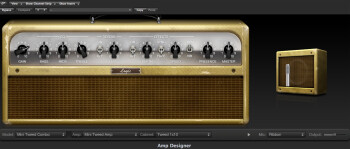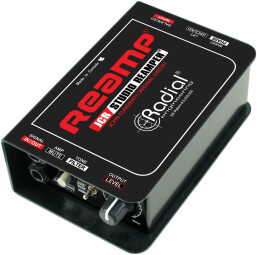If you polled a group of engineers and producers, asking them what’s the best way to record electric guitar, probably 99% of them would say by miking an amp — preferably a tube amp that’s turned up really loud.
In a perfect world, we would all record our guitar tracks that way, because we’d all have sound-isolated studios with great acoustics and really nice mics, and we’d have plenty of time for recording. But here in the real world, many musicians with home studios are recording in their bedrooms or living rooms, and don’t have the luxury to crank a Marshall or a Twin to 10, without jeopardizing their relationships or risking eviction.
Luckily, amp-modeling technology has improved a great deal, and just because you’re recording a guitar track direct (aka “DI” which is an acronym for “Direct Inject”), it doesn’t have to be noticeably inferior to a miked track. In some respects, going direct can be advantageous.
Outboard or Plug-In?
You can record a DI guitar track either through an outboard amp modeler (like a Line 6 POD, for example) so that the modeled amp sound is captured to the track, or totally dry (no effects, just the guitar direct output), and add tone later via an amp modeling plug-in.
|
Most DAWs offer some form of built-in amp and effects modeling plug-in. This shows Amp Designer from Apple Logic Pro.
|
If you use an outboard modeler, it’s similar to using an amp, in that you’re committing to a particular sound. Sometimes that’s a better route, especially if you’re a guitarist playing on somebody else’s song, and you don’t want to cede control of your sound to the producer, who could change it later to something you don’t like.
In most cases, though, it’s best to record the DI part completely dry, while monitoring through a third-party modeling plug-in or the plug-in that came in your DAW. Assuming the system allows you to keep latency at a reasonable level (latency is the delay caused by the signal going through the computer processing before you hear it), it’s a great way to go. The beauty of that is that you can change sounds later in the production, if you want to, because you haven’t committed to a sound during recording. In this scenario, your guitar sound becomes essentially another mix effect that can be experimented with and changed at any time. As long as you’re in control of it, why not?
DI’s Other Advantages
Besides having sonic control, going direct is often a good option when you’re recording a band, and don’t want to have the guitar amp sound leaking into mics that are being used on other instruments or voices. Especially in a home studio, which doesn’t typically have an iso booth for the guitar amp, recording the guitar (and bass) DI can make tracking ensemble parts a lot more practical.
The Sounds That Sound Best
|
Another option is to record a track direct and then reamplify it using a reamping box like this Radial Reamp JCR.
|
All amp modelers, both outboard and software-based will give you a choice of different amp types (usually a pretty standard selection of Fender, Marshall, Vox amps, Mesa/Boogie and so forth). Typically, the crunchy and high-gain models sound the most realistic, whereas the clean sounds are harder for the modelers to convincingly emulate. Don’t be afraid to insert other effects in the channel with your amp modeler, because sometimes you’ll get a better sound by using a combination of effects.
If you eventually decide that you just can’t get a realistic enough sound from your amp modeler for the part you’ve recorded, but don’t want to re-record the track through an amp, there’s always the option of reamplifying it. A reamping box takes the line-level output of your DI track from your DAW interface and coverts it to a high-impedance instrument-level signal that can be plugged into an amp and miked. Reamping boxes are not super expensive, and are handy to have around.




